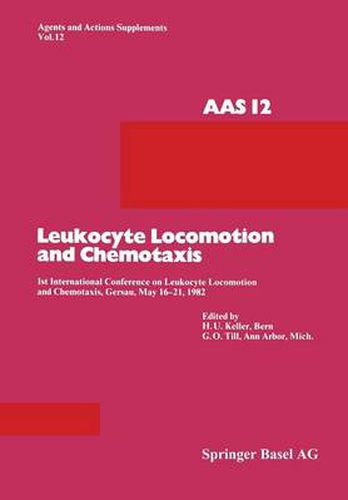Readings Newsletter
Become a Readings Member to make your shopping experience even easier.
Sign in or sign up for free!
You’re not far away from qualifying for FREE standard shipping within Australia
You’ve qualified for FREE standard shipping within Australia
The cart is loading…






This title is printed to order. This book may have been self-published. If so, we cannot guarantee the quality of the content. In the main most books will have gone through the editing process however some may not. We therefore suggest that you be aware of this before ordering this book. If in doubt check either the author or publisher’s details as we are unable to accept any returns unless they are faulty. Please contact us if you have any questions.
Ten years ago interest in leukocyte chemotaxis was restricted to a relatively small group of scientists whose interests were quite circumscribed. In the past decade both the number of workers and their publications has grown at some thing approaching an exponential rate and, more importantly, the field has gradually expanded to encompass a large number of diverse areas (mediators, receptors, cell effector mechanisms, regulatory factors, etc.). It is now apparent that leukocytes are particularly useful for studies of the locomotory behavior of all cell types and of mechanisms controlling cell movement and orientation. Chemotactic factors, once discovered as substan ces able to induce directional migration in leukocytes, are now recognized as potent stimulators of a variety of cell functions. Based on our knowledge in the field of basic research in leuko cyte chemotaxis, clinical observations in combination with ex perimental studies in vivo have provided new insights into the role of leukocyte-mediator interactions. The recognition that a specific interaction between chemotactic factor and leukocyte can lead to a multitude of cellular responses and products has opened up a broad area of study. The diversity of contributions to this volume based on a conference which was held in May 1982 in Gersau, Switzerland, reflects this development and demonstra tes that leukocyte chemotaxis continues to be an area of fasci nating and highly active research.
$9.00 standard shipping within Australia
FREE standard shipping within Australia for orders over $100.00
Express & International shipping calculated at checkout
This title is printed to order. This book may have been self-published. If so, we cannot guarantee the quality of the content. In the main most books will have gone through the editing process however some may not. We therefore suggest that you be aware of this before ordering this book. If in doubt check either the author or publisher’s details as we are unable to accept any returns unless they are faulty. Please contact us if you have any questions.
Ten years ago interest in leukocyte chemotaxis was restricted to a relatively small group of scientists whose interests were quite circumscribed. In the past decade both the number of workers and their publications has grown at some thing approaching an exponential rate and, more importantly, the field has gradually expanded to encompass a large number of diverse areas (mediators, receptors, cell effector mechanisms, regulatory factors, etc.). It is now apparent that leukocytes are particularly useful for studies of the locomotory behavior of all cell types and of mechanisms controlling cell movement and orientation. Chemotactic factors, once discovered as substan ces able to induce directional migration in leukocytes, are now recognized as potent stimulators of a variety of cell functions. Based on our knowledge in the field of basic research in leuko cyte chemotaxis, clinical observations in combination with ex perimental studies in vivo have provided new insights into the role of leukocyte-mediator interactions. The recognition that a specific interaction between chemotactic factor and leukocyte can lead to a multitude of cellular responses and products has opened up a broad area of study. The diversity of contributions to this volume based on a conference which was held in May 1982 in Gersau, Switzerland, reflects this development and demonstra tes that leukocyte chemotaxis continues to be an area of fasci nating and highly active research.